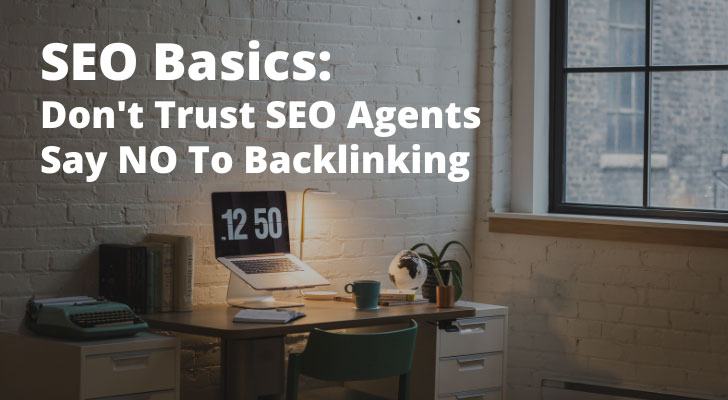SEO is the process of optimizing your website for Google search engine results. In order to be seen by potential customers, your website must first be indexed by Google. Once it is indexed, you can then optimize your content for keywords and phrases relevant to your industry.

What Does Optimizing Your Website Mean?
Optimizing your website for SEO means making your website easily accessible to visitors and making the content useful for them. Your site should load fast, be easy to read and search for, have a good title tag, and use keywords in your content.
Keyword research is essential for online success and can be done with tools. There are also other ways to optimize your website for SEO such as adding alt tags, creating an optimized header and footer, and using keywords in the domain name.
SEO Basics
If you want to rank higher in search engine results pages (SERPs), your content must be well-written and on-topic. To create high-quality content for SEO purposes, always aim to:
- Be accurate - Ensuring your content is factual, and doesn't contain any mistakes, will help your site appear more reputable and authoritative to search engines.
- Be concise - Keep sentences short and to the point so readers can understand your message quickly.
- Use keywords throughout - Including relevant keywords in your text will give it a boost in Google rankings. However, be sure not to overdo it; keyword stuffing will lead to penalization from search engines.
- Be engaging - Write with a clear voice that makes readers want to stick around.
- Optimize your headlines - Write headlines that are eye-catching and include relevant keywords.
- Optimize your images - Whenever you upload a photo, be sure to include keywords in the file name and alternate text.
- Add links - Include links to other articles on your site, as well as external sources, to further engage readers and improve your site's SEO.
Don't Trust SEO Agents. Say NO To Backlinking
Every time a new marketing trend comes along, there are always those who try to take advantage of unsuspecting businesses. The problem is, there are already plenty of unscrupulous so-called "SEO agents" out there who are more than happy to take your money in exchange for subpar or even non-existent results. Don't be taken in by these scams - learn what to look out for and how to avoid them!
What Is Backlinking?
Backlinking is when another website links to yours. It's also called “inbound linking” or “incoming links.” Backlinks were seen as important in the past because they showed that other websites saw your content worth linking to. It meant that backlinks would help improve your search engine rankings by making your site look more relevant and authoritative. However, this principle has been abused by many website owners in recent years.
Why You Shouldn't Trust SEO Agents
An increasing number of fake bloggers and self-proclaimed SEO agents are selling guest blog services in an attempt to provide backlinks from authority sites. Essentially, they pay authority websites to falsely recommend their site, thereby manipulating search engine results.
Search engines are no longer fooled by such cheap tactics, because the AI can detect which links are placed unnaturally as part of the link-building industry.
SEO agencies may not have your best interests at heart, making a quick buck than actually helping you improve your website's ranking. Plus, they may use questionable link-building practices such as buying links from third-party spammers or participating in link farms.
As a consequence, if you rely on an SEO agent there’s a good chance that you are vouching for the technique that the agent uses. If the agent uses a backlinking strategy, your reputation could be damaged among search engines.
How To Do SEO Without Having To Manipulate Backlinking
The basic fundamental is to improve the quality of your site so here are the SEO techniques, which are not too difficult to master.
What Do You Advocate?
Choosing the Right Keyword Research Method
When it comes to choosing the right keyword research method for your blog, there are a few things you need to take into account. There are mainly three methods that allow you to decide what type of research you want to do;
- Keyword discovery is the cheapest option and involves simply typing in your target keywords into Google or another search engine and seeing what comes up. This method is good for finding new keywords that you might not have thought of before, but it's not as effective at finding long-tail keywords.
- Paid search advertising is the most expensive option but also the most effective. This involves buying ads that are specifically targeted toward your target keywords. Not only will this allow you to reach a lot of people with your message, but it will also give you more data about what works and what doesn't work when it comes to targeting your keywords.
- Competitor analysis is a more in-depth type of research that can help you understand how your target keywords are being used by other businesses. This information can be helpful in figuring out where to focus your efforts when it comes to targeting your keywords.

Analyzing Your Competition
Analyzing Your Competition
With so many bloggers out there vying for the attention of search engine crawlers, you want to determine how many words you need to write to rank well in organic search.
Creating and Testing your Meta Data
"Creating metadata" means properly labelling your blog posts and including the keywords in the title, you need metadata to improve your website's ranking on search engines. Two main metadata are; Title Tags and Meta Descriptions.
Title Tags:
- Target Keywords: Include your target keyword naturally within the title.
- Length: Aim for around 50-60 characters. Titles too long will be cut off in search results.
- Clarity and Concision: Clearly communicate what your page is about.
- Uniqueness: Avoid duplicate titles across your website.
Meta Descriptions:
- Target Keywords: Again, include your target keyword naturally within the description.
- Length: Aim for around 155-160 characters. Descriptions too long will be cut off in search results.
- Compelling and Informative: Briefly describe the content of your page and entice users to click.
- Call to Action: Consider including a CTA like "Learn More" or "Shop Now".
- Uniqueness: Avoid duplicate descriptions across your website.
Here are some additional tips for creating effective SEO metadata:
- Use strong verbs and active voice.
- Write for users, not for search engines.
- Consider search intent. What information are users looking for when they use your target keyword?
How Many Words Do I Need To Write For SEO?

If you want to rank higher in search engine results pages (SERPs), then you know by now that your blog content needs to be well-written and relevant. In general, longer blog posts tend to perform better in search engines than in shorter ones.
Yoast suggests that you must write at least 300 words for your page to be indexed by Google. A good rule of thumb is to aim for at least 1,000 words per post. But if you're in a competitive industry, you may need to write even more than that.
Of course, don't sacrifice quality for the sake of word count. As long as your content is informative, you should be able to rank well in search engines regardless of how many words it contains.
If writing 1,000 words don’t sound achievable, aim for around 500 words per post to start with. This will give you enough room to introduce your topic, develop it, and provide user value.
Additionally, think about how you can make your blog more engaging for readers. This includes using helpful graphics, interesting data visualizations, and compelling stories. By doing all of these things, you'll ensure that people stick around long enough to learn what you have to say.
Do I Need To Display Graphs On My Blog Post For SEO Purposes?
So you know the more visually appealing your blog is, the more likely readers are to stick around. There’s no surprise that incorporating graphs into your blog posts can also improve your site's SEO too.
Not only can graphs make your blog look more professional and polished, but they can also help search engines better understand the content of your post, which can in turn lead to higher rankings and more traffic.
Of course, simply adding any old graph to your blog won't guarantee better SEO. The key is to choose graphs that are both relevant and informative, and that complement the text of your post. For example, if you're writing about the history of a particular company, including a timeline graph could be a great way to visualize the data and help readers follow along.
How to Use Graphs in SEO
Graphs show relationships between different pieces of data, making your content more informative and easier to understand. They can also add visual interest to your blog, which can help draw in readers and encourage them to share your content. And when it comes to social media, well-designed graphs can be eye-catching and engaging, helping you get more exposure for your blog.
If you're not sure how to incorporate graphs into your blog posts, don't worry - it's actually pretty easy. There are a number of different ways you can do it, depending on the type of data you want to visualize and the effect you're hoping to achieve. Here are just a few ideas to get you started:
- Use a line graph to show changes or trends over time.
- Use a bar graph to compare different data sets side-by-side.
- Use a pie chart to visually represent proportions or percentages.
- Use a Venn diagram to show relationships between different data sets.
Google Sheets is a free online spreadsheet application that includes built-in graphing capabilities. If you're using WordPress, there are also a number of plugins that can help you create graphs, such as WP Data Visualizer and Graph Paper Press.
You can add it to your blog post by embedding the graph into your post (most graphing tools will provide you with embed code), or by uploading the image of the graph and adding it into your post like you would any other image.
The article "How to configure the visualization of statistics" may help you with this.

How To Optimize Images For SEO
Image optimization means reducing the file size of your images without compromising quality. This ensures that your images load quickly on your website, which is important for both user experience and SEO.
There are a few different ways to optimize images:
1. Choose the right file format.
There are many different image file formats, but not all of them are ideal for use on a blog. When it comes to optimizing images for the web, you should generally use JPEG or PNG files. JPEG files are good for photos and other complex images, while PNG files work well for simple graphics and illustrations. GIFs should only be used for very small images or animations.
2. Resize your images.
Images that are too large can take up too much space on a page and slow down loading times. On the other hand, images that are too small can look pixelated and low-quality. So you really need to resize your images to an appropriate size before uploading them to your blog.
3. Compress your images.
Use lossless compression to reduce the file size of your images. Lossless compression does not reduce the quality of your image, but it can still make a significant difference in file size.
Use a tool like TinyPNG to further optimize your images. TinyPNG uses lossless compression and helps you optimize all of the images on your website with one click. This will help your pages load faster and improve your blog's performance.
4. Use alt text.
Alt text is a short description of an image that is displayed if the image fails to load. It is also used by search engines when indexing images, so it can help improve your blog's SEO. When adding images to your blog posts, be sure to include relevant alt text that accurately describes the image.
5. Add captions.
Captions are another great way to enhance the appearance and usability of your blog posts. They can help explain what is happening in an image, provide additional context, or simply add a bit of personality to your posts. If you choose to add captions to your images, be sure to keep them short and sweet so as not to distract from the rest of your content.
Other Image Optimization Tools
Apart from TinyPNG, you can try the following tools:
- Adobe Photoshop: Photoshop is a widely used program for editing and manipulating images. It offers a variety of features for optimizing images, including resizing, cropping, and adjusting image quality.
- Kraken.io: Kraken is a paid online service that provides lossless image compression. It offers a variety of features such as batch processing, drag-and-drop support, and the ability to preserve EXIF data.
- Bulk Resize Photos: This tool allows you to resize multiple images in the same way. When you have a lot of images to resize and you want all of them to have 300px, or all of them to be reduced by 30%, for example, BulkResizePhotos will be useful.
SEO Basics: Don’t Trust SEO Agents. Say NO To Backlinking - Conclusion
Everyone wants their website to rank high in search engine results to drive organic traffic. The market is extremely competitive and achieving this goal can be difficult. But learning the SEO techniques is not as difficult as you think, it’s just the process can be time-consuming, that’s all.
Don’t rely on SEO agents, and don’t listen to them when they start talking about providing quality backlinks. As a new blogger, your priority is to learn and follow these SEO basics. That’s all you need to do.
Did You Know You Already Have A LOT To Sell?
So What's Your Problem?

